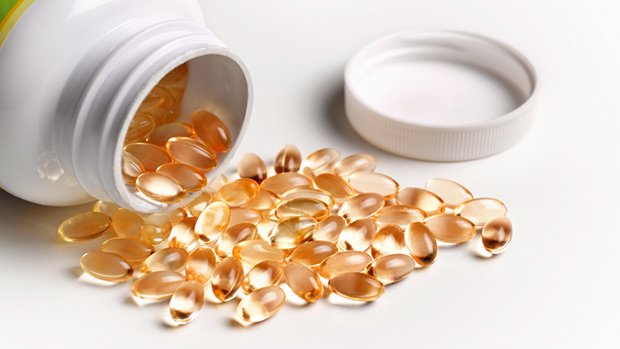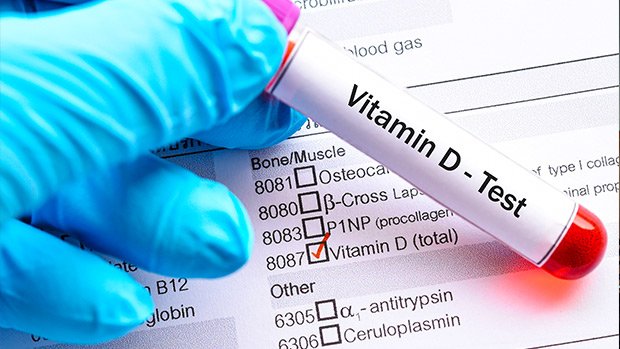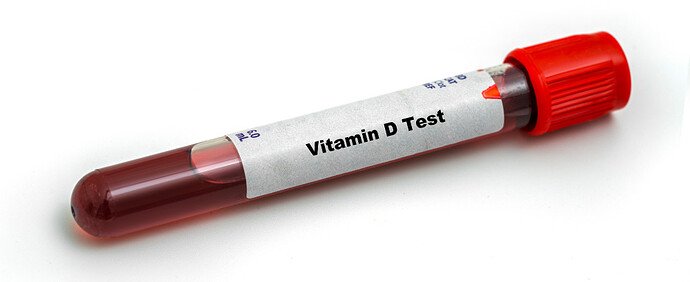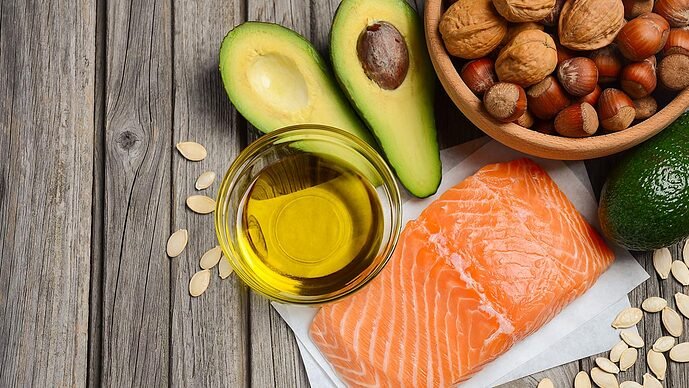
VITAMIN D3 REALLY DOES WORK
That big vitamin D study funded by the government concluded that Vitamin D supplements don’t work. Here are all the things they got wrong.
A VERY QUESTIONABLE VITAMIN D STUDY
Conducting scientific studies like the following would probably be silly:
- A study to test the efficacy of a new birth control pill using octogenarians as test subjects.
- A study to test a new erection pill using the Unsullied, who’ve had both pillar and stones removed.
- A study on the ability of fleece-lined thermal underwear to keep women who live in the Sonoran Desert warm.
- A study to see if dogs really do love bacon, only using chipmunks instead of actual dogs.
If you used just a tiny bit of brain power, you could probably guess that any results obtained from such studies might not make much sense or have much applicability to anything.
Well, that’s pretty much how I feel about the big vitamin D study (VITAL) that just came out – the one that said that you don’t need to take vitamin D supplements (or even test levels of the vitamin) because they don’t help to protect bones from fractures or do much of anything else either.
Their study, titled “Supplemental Vitamin D and Incident Fractures in Midlife and Older Adults,” neglected to consider any number of extenuating factors that likely affected the results.
So, What Exactly Did the Study Say?
SO, WHAT EXACTLY DID THE STUDY SAY?

The study, published in the New England Journal of Medicine, involved roughly 26,000 generally healthy people in their 50’s or older. The aim of the randomized, controlled study (funded by the U.S. Government), known as VITAL, was to compare bone fractures in people who took a “high” dose of vitamin D3 (2,000 international units), n-3 fatty acids (1 gram per day), or a combination of both, for five years.
Taking vitamin D (or omega-3 fatty acids) didn’t appear to reduce the risk of broken hips or other bones. Neither did it seem to help prevent any major diseases. It also didn’t help prevent falls, reduce atrial fibrillation, change body comp, improve cognitive functioning, improve stroke outcomes, reduce frequency or severity of migraines, prevent macular degeneration, or reduce knee pain.
Their message, in an accompanying editorial, to the people who regularly supplement with vitamin D? Don’t bother.
Wow.
Now I’ve not spent a lot of time studying those aforementioned aspects of vitamin D supplementation. Instead, I’ve been more interested in its immunity-enhancing abilities, along with its role in athletic function, namely, skeletal muscle, lung function, heart function, and nervous system function, along with the possible role it plays in sexual function.
Regardless, I think they’re as wrong as a person or group of people can possibly be. They’re “We’ll never put a man on the moon” wrong.
Why my optimism in the face of such overwhelming statistics? Because the people who put together the study forget to consider a host of factors that determine whether vitamin D supplementation is effective or not.
Neglected Factor 1 – Magnesium
NEGLECTED FACTOR 1 – MAGNESIUM
The study didn’t address magnesium intake at all, and vitamin D, regardless of how much you take, won’t do the things you need it to do if you’re deficient in magnesium.
Vitamin D just can’t be metabolized without sufficient magnesium. Without it, the vitamin just hangs around like some bum in front of a 7-Eleven.
Ordinarily, this magnesium issue might not be that important of a factor, but given that roughly 80% of the American public seems to be deficient in the mineral (according to the last NHANES study), it seems like it’s a really big deal and could explain why vitamin D3 supplementation didn’t appear to do squat in the VITAL study.
Oh, and athletes? They’re even worse off regarding magnesium, as the mineral is fond of leaving the body in sweat.
If you really want to figure out if vitamin D is doing the things it’s purported to do, you’ve also got to monitor magnesium intake. This fact alone might sink the veracity of the VITAL study.
Neglected Factor 2 – Magnesium’s Buddy, Calcium
NEGLECTED FACTOR 2 – MAGNESIUM’S BUDDY, CALCIUM
Calcium and magnesium exist in a very tight relationship in the body. If this ratio isn’t respected, if something mucks it up – like a dramatic increase in the consumption of calcium foods without a concurrent increase in magnesium consumption – you get unfortunate consequences.
For one thing, you severely cripple the ability to transport, synthesize, and activate vitamin D.
Doctors and scientists see it all the time: Individuals with a high calcium to magnesium intake are at a higher risk of magnesium deficiency, and the activities of the three major enzymes that determine vitamin D concentrations are all magnesium dependent.
The result is a vitamin D deficiency, or at the very least, a vitamin D insufficiency.
So maybe you’re thinking, no problem, I’ll just double or triple-up my intake of vitamin D supplements. Not so fast.
The more vitamin D you take, the further you tap into magnesium stores, leaving you an increasingly insufficient amount to activate the enzymes responsible for determining vitamin D levels.
The problem is that calcium consumption, in-between the years 1977 to 2012 (the most recent dates for which we have data), increased at a rate 2 to 2.5 times that of magnesium intake, resulting in calcium to magnesium intake ratios of more than 3.0.
That’s understandable, given that the magnesium status is low in populations that consume a lot of processed foods that are high in fat, sugar, and refined grains.
The ideal ratio, however, is around 2.0 to 2.2, and anything higher than 2.8 can lead to problems, among them being the inability to metabolize vitamin D, not to mention a greater risk of developing type 2 diabetes, metabolic syndrome, chronic pulmonary disease, possibly some cancers, and impairing many of the 300 enzymatic reactions that involve magnesium.
Neglected Factor 3 – Fat Intake
NEGLECTED FACTOR 3 – FAT INTAKE
Vitamin D3 is fat soluble. Without concurrently ingesting some fat, taking a vitamin D3 capsule won’t do much at all.
This problem is demonstrated by one of the dairy industry’s practices. To comply with the wishes of their customers and well-meaning dietitians, dairy companies remove much of the fat from their products (for example, low-fat milk, skim milk, etc.). However, removing the fat also removes the fat-soluble vitamin D, so they fortify their products by adding back some vitamin D.
However, since the fortified product doesn’t contain much fat, the body fails to absorb appreciable amounts of it. The unabsorbed vitamin D is like the impoverished child pressing its nose against the windowpane, able only to watch in envy as all the other nutrients get absorbed into the toy store of the intestinal tract.
The same thing is likely to happen with taking vitamin D capsules. Without taking them with a fatty meal, they won’t get absorbed efficiently. Subsequently, researchers will assume that the vitamin didn’t work.
Neglected Factor 4 – Difficulty Elevating Vitamin D Levels
NEGLECTED FACTOR 4 – DIFFICULTY ELEVATING VITAMIN D LEVELS

I’ve seen it repeatedly and even experienced it personally. You take the initiative and try to elevate your vitamin D levels to optimal blood levels and start popping conventional capsules and grimacing down sardines for weeks or even months, and nothing much happens. Levels don’t budge.
The trouble is, the total amount of vitamin D (both D2 and D3) found in a food during chemical analyses often doesn’t reflect its bioavailability. A lot of the vitamin is bound up in the actual food and remains so after you eat it. Lots of things contribute to this: the physiochemical form of the vitamin D, the fatty acids and fibers in the food, the size of the food particles themselves, and the quantity of the vitamin itself.
Interactions between vitamin D and other fat-soluble nutrients might also be a factor, as well as a bunch of host-related issues (age, disease state, fed condition, genetics, obesity, etc.).
Then there’s how you might prepare any vitamin-D-containing foods. Heat affects it. Light affects it. Moisture, oxygen exposure, and even storage conditions affect levels of vitamin D. That means that any vitamin-D-containing foods that are boiled, pressure-cooked, Insta-Potted, baked, or air fried could end up being vitamin-D compromised.
Sure, the VITAL study didn’t discuss food sources of vitamin D, but traditional vitamin D supplements are prone to all the same manufacturing and absorption problems attributed to vitamin-D-containing foods – moisture, oxygen exposure, excess heat, and non-optimal storage conditions in general.
Unless all the above-listed precautions were taken in preparing and distributing the vitamin D used in the study, there’s sufficient reason to think that the capsules they used were the 3.2 beer of the vitamin D world. In other words, you’d need to ingest more than usual to get a vitamin D “buzz,” i.e., a protective effect.
What They Should Have Used Instead
WHAT THEY SHOULD HAVE USED INSTEAD
The only form of vitamin D currently worth taking is microencapsulated vitamin D3. This form of the vitamin is manufactured by encapsulating vitamin D molecules in liposomes, or solid lipid nanoparticles.
The vitamin then presents as tiny “beadlets” and is protected from moisture, oxidation, pH, temperature, and mechanical forces. The microencapsulated product is stable, water dispersible, and, most importantly, highly bioavailable.
Studies show that the effects of this form of vitamin D remain constant for up to 14 days, making it clearly superior to the conventional vitamin D supplements that comprise most of the market. People who use it have reported rapid and impressive increases in blood levels of vitamin D.
However, as stressed above, you still need to have adequate levels of magnesium for it, or any form of vitamin D, to work. Given how difficult it is to obtain and maintain adequate levels of magnesium through diet alone, it seems prudent to pop at least 400 mg. a day, preferably in chelated form.
My Closing Argument
MY CLOSING ARGUMENT
I’m still dumbstruck at how the VITAL study seemed to totally ignore the vast amounts of research on vitamin D and immunity, let alone all its positive effects on health and performance.
The simple fact is that infection-fighting T cells need vitamin D to activate. Researcher Carsten Geisler explained it this way:
“When a T cell is exposed to a foreign pathogen, it extends a signaling device or ‘antenna’ known as a vitamin D receptor, with which it searches for vitamin D. This means the T cells must have vitamin D or activation of the cell will cease.”
There’s also strong epidemiological evidence that people who live closer to the equator generally have fewer incidences of disease and better prognoses when they do get sick than people who live farther away from the equator. That’s because exposure to sunlight prods the body into making more vitamin D.
Further, assorted studies point to the strong possibility that once your vitamin D levels get beyond, say, around 50 mg per ml of blood (“normal” is considered to be around 20 mg per ml.), you’re practically immune to certain viruses.
I could go on for pages, but to reduce my argument to the simplest terms possible, our immune system needs vitamin D to function properly, and there are currently too many obstacles for people to get the amount they need.
So if you really want to conduct a quality study that tests the efficacy of vitamin D supplements, you’ve got to take into consideration all the factors I mentioned, not just toss them out into the world like giant handfuls of chicken feed.
References
REFERENCES
- Autier P et al. Vitamin D Supplementation and Total Mortality: A Meta-analysis of Randomized Controlled Trials. Arch Intern Med. 2007 Sep 10;167(16):1730-7. PubMed.
- Dai Q et al. Magnesium status and supplementation influence vitamin D status and metabolism: results from a randomized trial. Am J Clin Nutr. 2018 Dec 1;108(6):1249-1258. PubMed.
- Dawson-Hughes B et al. Meal conditions affect the absorption of supplemental vitamin D3 but not the plasma 25-hydroxyvitamin D response to supplementation. J Bone Miner Res. 2013 Aug;28(8);1778-83. PubMed.
- Ginde AA et al. Association Between Serum 25-Hydroxyvitamin D Level and Upper Respiratory Tract Infection in the Third National Health and Nutrition Examination Survey. Arch Intern Med. 2009 Feb 23;169(4):384-90. PubMed.
- Leitch BA et al. Vitamin D Awareness and Intake in Collegiate Athletes. J Strength Cond Res. 2021 Oct 1;35(10):2742-2748. PubMed.
- Maurya VK et al. Vitamin D microencapsulation and fortification: Trends and technologies. J Steroid Biochem Mol Biol. 2020 Feb;196:105489. PubMed.
- Marineua AR et al. Vitamin D supplementation to prevent acute respiratory tract infections: systematic review and meta-analysis of individual participant data. BMJ. 2017 Feb 15;356:i6583. PubMed.
- Rosanoff A et al. Essential Nutrient Interactions: Does Low or Suboptimal Magnesium Status Interact with Vitamin D and/or Calcium Status? Adv Nutr. 2016 Jan 15;7(1):25-43. PubMed.
- Šimoliūnas E et al. Bioavailability of Different Vitamin D Oral Supplements in Laboratory Animal Model. Medicina (Kaunas). 2019 Jun 10;55(6):265. PubMed.
- Maurya VK et al. Vitamin D microencapsulation and fortification: Trends and technologies. J Steroid Biochem Mol Biol. 2020 Feb;196:105489. PubMed.
- Šimoliūnas E et al. Bioavailability of Different Vitamin D Oral Supplements in Laboratory Animal Model. Medicina (Kaunas). 2019 Jun 10;55(6):265. PubMed.
- Urashima M et al. Randomized trial of vitamin D supplementation to prevent seasonal influenza A in schoolchildren. Am J Clin Nutr. 2010 May;91(5):1255-60. PubMed.










